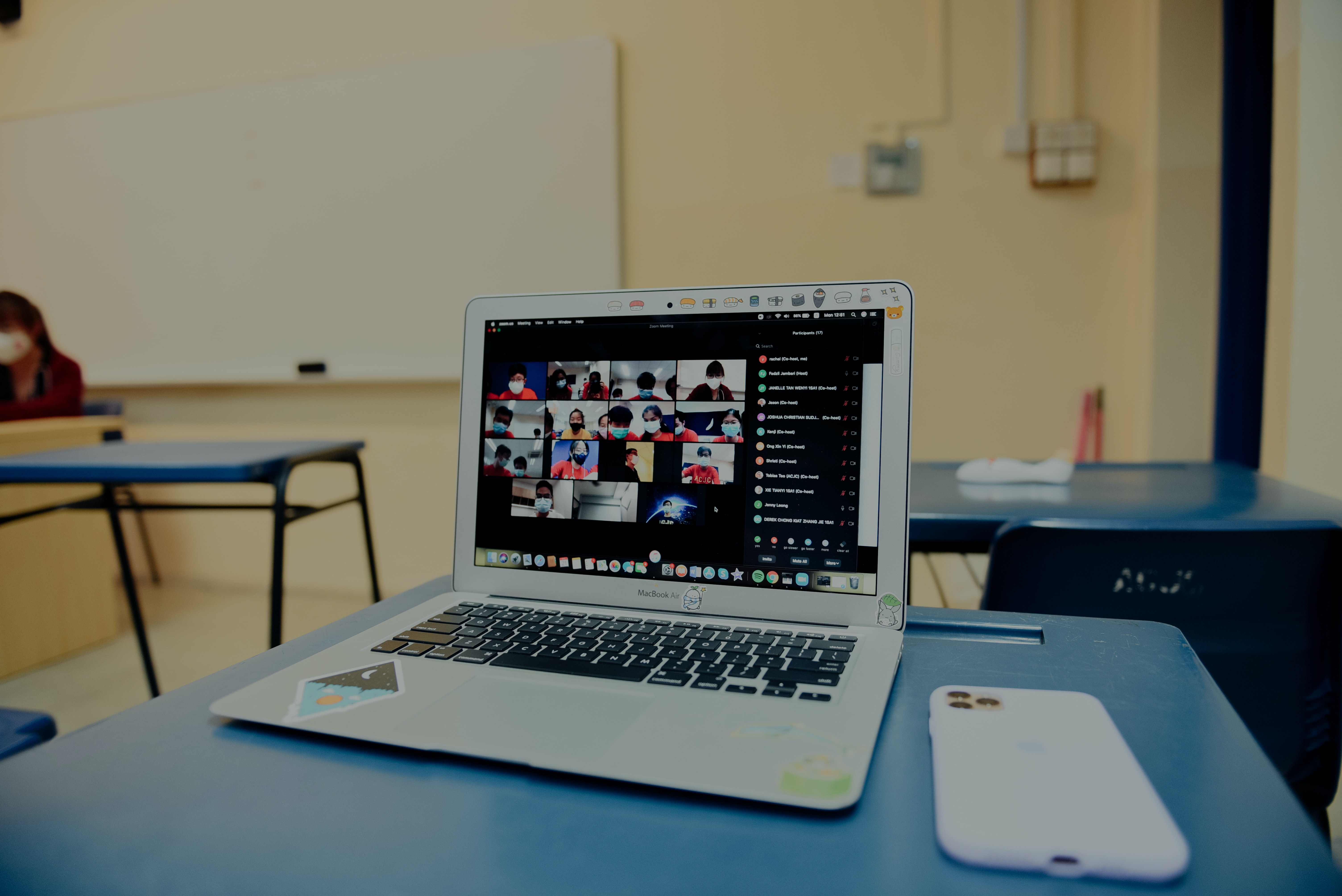4 Ways My Teaching Has Changed Because of Remote Learning
The pandemic has changed my teaching.

The pandemic has changed my teaching.
In March of 2020 I walked out of my editing class at Western Connecticut State University after telling my journalism students the university would be closing for at least two weeks. I expected it would be longer and joked that by the next time the students saw me, I’d have a long beard.
The beard part came true but I never saw those students in person again, and more than a year and a half later I’ve yet to step foot back in a physical classroom. When I do return to in-person classes this fall, my extra facial hair will not be the only change my students notice.
The often frustrating realities of both synchronous and asynchronous teaching during a pandemic have forced me -- like tens of thousands of other educators -- to utilize new technologies and to reevaluate what I prioritize during class. Some of the lessons I learned will continue to inform my teaching going forward.
1. Individualized instruction
While struggling both literally and figuratively to connect with students this past year, I thought a lot about what it was that I could offer that gave them the most value. It wasn’t explaining the basic tenets of journalism; they could get that from the textbook. And it wasn’t hearing anecdotes from my own writing career -- my wife assures me nobody cares about those. Instead, it was specific feedback about their work and individually tailored advice to help them improve their writing.
This isn’t a new concept. Meeting students where they are has long been a tenet of good teaching, espoused by me and many other educators. But in the past this would be something I provided almost as a bonus. Now it is my guiding principle for building my courses and prioritizing my time. I consciously spend less time preparing slides so I’ll have more time to respond to each student's paper. I designate 15 minutes or so of many classes for one-on-one meetings with students to go over their work in real time, and thanks to advice from others, I’ve started staggering large writing assignments. This has the dual benefit of allowing me to spend more time with each paper or story students submit and helps save me from those nightmarish weekends during which I have to sift through 50-plus papers.
2. Active learning
I’ve sat through more Zoom or other video conference-delivered training sessions over the past year than I can count. What I’ve learned about myself is that I don’t learn how to do anything from listening to others talk. You can tell me how to upload a story on a new website a 100 different times, and I might learn some terminology and concepts, but until I sit down and start working on it, I won’t make much progress on the actual skills portion of the lesson. The research suggests most people are like me and that we learn more from active learning than lecture.
Tech & Learning Newsletter
Tools and ideas to transform education. Sign up below.
People often describe active learning as putting students in the drivers’ seat. I like this analogy. Knowing traffic laws is one thing, but learning how to drive takes time behind the wheel as we get accustomed to how the car maneuvers and how much gas and brake pressure to apply. Writing and many other aspects of education are similar, except me and other educators have traditionally devoted much of class time to discussing traffic laws and letting students learn to “drive” on their own outside of class.
While teaching over Zoom, I found that the more active the lessons, the better students were engaged, and the more likely they learned. Even when I employed active learning techniques in the past, I would make sure it didn’t take up the whole class as I felt guilty if I wasn’t lecturing enough. As a result of the pandemic, all-you-can-eat buffets are no longer appetizing to me and I no longer feel guilty about not lecturing enough. Win-win!
3. Edtech/Google Forms
Teaching online, I was forced to get creative about engaging students whose microphones were almost always on mute and whose cameras were often off. One way I did that was by using Google Forms for quick multiple choice assessments, surveys, and short answers. This allowed me to get feedback from all students, even shy ones who struggle to speak in front of class, to keep group work focused and structured, and to offer immediate individualized feedback on short writing assignments.
Another tech tool I found helpful was the chat feature in Zoom. This provided an outlet for students to communicate with one another and ask questions as I spoke, and let me know instantly if the students were understanding the material.
I’m going to continue to incorporate Google Forms and some class chat functions during my in-person class. Both are helpful ways to connect with students in real-time while fostering active learning and providing individualized feedback. These tools also helped me become more open to easy-to-use apps that can foster both student engagement and enjoyment. Next semester, rather than reading through the syllabus on the first day of class, I plan on having the students explore different aspects of it by using the scavenger hunt app GooseChase Edu.
4. The Potential of Video
Like many others at this stage in the pandemic, I’m suffering from Zoom fatigue and the words “You’re muted” may haunt my dreams for the remainder of my life. But even so, I’ve come to embrace certain aspects of video technology. I plan on using Zoom in the future to bring guest speakers to class. This makes it easier for the guests, who unfortunately are always unpaid, to lend my students their expertise. Video is also great for one-on-one and small group meetings. As an adjunct instructor, I’m often on campus for a limited time and this will create more opportunities to meet with students. It also makes coordinating meetings for group work easier.
Beyond video conferencing, I’ve realized the potential of pre-recorded video and lecture. I recently interviewed Michael Noetel, a psychologist and the lead author on a study that found that students who learned from pre-recorded videos outperformed students who learned from in-person lectures, while those who had a combination of pre-recorded videos and in-person assistance did the best. This comes as no surprise to flipped learning enthusiasts who have long been touting the benefits of video and prioritizing instructor feedback during synchronous time with students.
I have not fully switched to flipped learning but I have been incorporating more of its principles this past year. If I can find a video that describes an aspect of writing I’m covering in class, I’m no longer shy about assigning that outside of class and making it clear to students they need to watch it before arriving. I’ve also created a bank of short videos on specific skills that I can direct students to as I respond to their work. Most of these videos are made by others, but my summer goals include making a few videos for each of my classes on topics I know students will likely need to review more than once. And I’ll make sure not to be muted for these.
Erik Ofgang is a Tech & Learning contributor. A journalist, author and educator, his work has appeared in The New York Times, the Washington Post, the Smithsonian, The Atlantic, and Associated Press. He currently teaches at Western Connecticut State University’s MFA program. While a staff writer at Connecticut Magazine he won a Society of Professional Journalism Award for his education reporting. He is interested in how humans learn and how technology can make that more effective.











